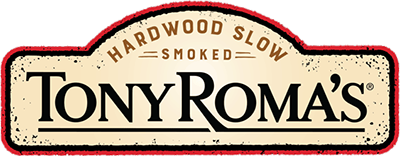Pre-Cooked Ribs | The History of Barbeque Ribs
Pre-cooked ribs may be the latest way to cook delicious ribs at home, but Tony Roma wants you to know where the craze began.
Pre-cooked ribs give today’s cooks a simple way to have delicious BBQ meals even when the weather outside does not cooperate. Barbecue is considered the most American cuisine available, but few people know the origins of the dish.
Origin of Barbecue
There are conflicting opinions about where the word barbecue originated. Many believe that the word comes from the Spanish word “barbacoa,” which referred to the land’s native practice of slow-cooking meat over a wooden platform. In America, the practice gained popularity during the late 1800s during Old West cattle drives, as cowboys ate the less-than-perfect cuts of meat, including brisket, butt, and ribs. Cornbread became one of the most common BBQ side dishes, as corn grew better in the Midwest than wheat. Traditionalists are quick to point out that grilling and barbecuing are not the same thing. Barbecue requires meat cooked over indirect heat, normally a wood fire, for a very long time, which is how Tony Roma cooks his pre-cooked ribs.
Barbecue in the South
The pig became a food staple in the South as they were low-maintenance and convenient, and many times farmers allowed pigs to root wild in the forests surrounding the farms, catching them only when the food supply became low. Pigs that rooted in the forests were stringier and tougher than those raised in pens, but required less maintenance. At the end of the Colonial period, neighborhood barbecues became popular, but it was not until about 50 years before the Civil War that the traditions associated with barbecues became commonplace, with those easily recognizable barbecue pork side dishes. Today, pre-cooked ribs help modern cooks create that same Southern barbecue feeling without taking as much as 18 hours to cook them.
Barbecue Nationwide
Barbecue methods and saucing differ greatly from region to region throughout the United States. In the South, pre-cooked ribs are slathered with sauces that range from sweet tomato versions to fiery red Texas styles. On the East Coast, some areas use a vinegar and tomato sauce, serving barbecue pork side dishes of coleslaw and hush puppies, a nod to the seafood industry. Others serve barbecue with a yellow mustard-based sauce alongside light bread, coleslaw and stewed organ meats mixed with rice.
Barbecue has a rich and colorful history throughout the United States. Today’s cooks can enjoy that rich, barbecue flavor with pork ribs, oven baked, with Tony Roma’s pre-cooked ribs.


Leave a Comment
Most etymologists believe that barbecue derives from the word barabicu found in the language of the Taíno people of the Caribbean and the Timucua of Florida, and entered European languages in the form barbacoa. The word translates as “sacred fire pit.””
Our very own webpage
http://www.caramoan.ph/history-of-caramoan/
Most etymologists believe that barbecue derives from the word barabicu found in the language of the Taíno people of the Caribbean and the Timucua of Florida, and entered European languages in the form barbacoa. The word translates as “sacred fire pit.Your pre-cooked ribs are fantastic!